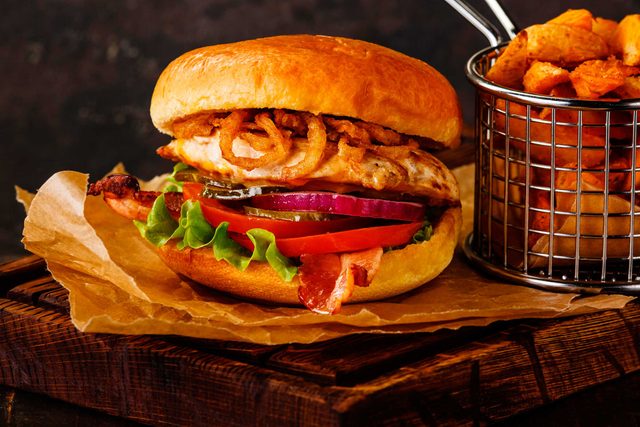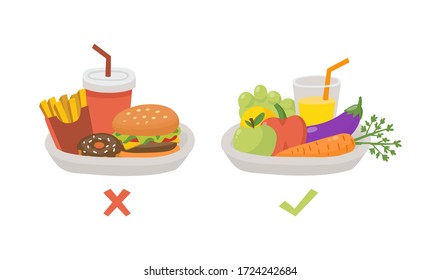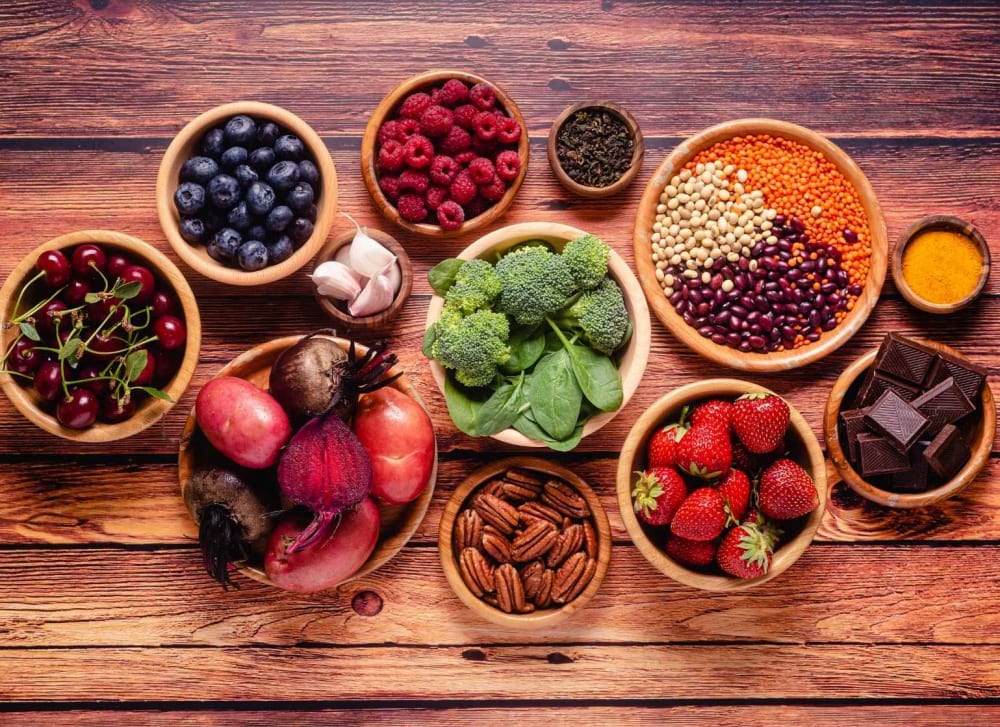
While there are some healthy foods you should avoid if you have GERD, it doesn't mean that you have to stop eating your favorite foods. Your symptoms will improve and your chances of getting GERD are lower if you make changes to your diet. Some of the best changes to your diet are to cut out citrus fruits and substitute non-citrus fruit. You can also eat less high-fat vegetables.
To add flavor to your meals, fresh herbs can be used in place of fruits and veggies. Just make sure that they aren't too acidic. Onions can be used to enhance flavor and not cause irritation. For the same effect, try adding green or chopped shallots. Whatever type of onion, it is important to start slowly and increase the amount.
Tomatoes are a common food to avoid with GERD. Lycopene is a powerful anti-cancer agent, and tomatoes are high in it. However, this acidity can irritate the already inflamed tissue in the esophagus. For that reason, they should be avoided whenever possible. Watermelon and watermelons are two other food sources of lycopene, along with tomatoes.

Avoiding pizza is a good idea. Pizza should only be consumed once per week. The combination of spicy and fatty foods can worsen GERD symptoms. Fried and fatty foods should also be avoided. Avoid coffee, chocolate, and alcohol. Caffeine drinks can irritate the esophagus and lead to acid reflux. Those with GERD must limit their intake.
You should avoid eating spicy food on a regular basis. Even though onions can be a healthy staple, heartburn can occur. Onion can stimulate the production of acid as well as bile. The good news is that onions can be cooked to put out the fire. Adding onion to the list of foods to avoid if you suffer from GERD can help to manage the condition. These aren't necessarily the only foods you need to avoid if your GERD is severe.
Although many of these foods should be avoided, some can worsen your symptoms. If you have GERD then spicy foods should be avoided. They can alter the lower esophageal and sphincter, increasing acidity in the stomach. Avoid chocolates as they contain cocoa and caffeine. All of these substances are acidic and should be avoided with GERD.
It is important that you are aware of what foods can trigger GERD symptoms. Some foods can worsen symptoms while others may cause severe pain. Citrus fruits and citrus juice are good options. Alcohol is a bad option. To maintain your health, it is important to limit the intake of these foods. Limiting the intake of these foods items should be a priority. You should talk to your doctor if you are unsure about which foods you should avoid if you have GERD.

If you have GERD it is important to avoid spicy foods as well as alcohol. GERD can be caused from foods and ingredients. Limiting the intake of these foods is a good idea. Keep in mind, however, that caffeine and alcohol are acidic. If you're concerned that your GERD symptoms may be caused by a particular food, try avoiding these foods.
Another food to avoid with GERD is citrus fruits. Grapefruit and oranges contain high levels of citric acid, which can worsen your symptoms. It is important to limit citrus fruit intake. While you don't have to eliminate all citrus fruit, it is important to limit its intake to a moderate amount. Instead, you should eat and drink the fruit as often as possible. You can limit the amount of citrus fruit you consume if necessary.
If you have GERD, you should avoid dairy products. Some people with GERD say dairy products can soothe their stomachs, but they can also aggravate the condition. In addition to these, you should avoid caffeine, alcoholic drinks, and caffeine. Your diet may be a contributing factor to your GERD symptoms. You should talk to your doctor if you have any specific food allergies. If you already take medication for GERD, it will make it easier to make a healthier lifestyle choice.
FAQ
Increase immunity with herbs or supplements
You can boost your immune function with herbs and natural remedies. Ginger, garlic, ginger, echinacea and ginkgo biloba are some of the most common.
However, these herbal remedies should not replace conventional medical treatment. They may cause side effects such as nausea, diarrhea, stomach cramps, headaches, dizziness, and allergic reactions.
Why is it important that we live a healthy and happy life?
Healthy living can lead to a longer, more fulfilling life. Healthy eating habits, regular exercise, healthy sleep habits, stress management, and good sleep habits can help to prevent heart disease, stroke, diabetes, cancer, and other serious diseases.
A healthy lifestyle will also improve our mental health by helping us cope better with everyday stresses. A healthy lifestyle can also help you feel and look younger.
How can I live my best life everyday?
The first step towards living your best life everyday is to find out what makes you happy. Once you know what makes you happy, you can work backwards from there. You can also ask other people what they do to live the best lives possible every day.
You can also find books such as "How to Live Your Best Life" written by Dr. Wayne Dyer. He discusses finding happiness and fulfillment throughout our lives.
How do I count calories?
It is possible to wonder "What diet is best for me?" or "is counting calories necessary?" Well, the answer depends on several factors including your current health status, your personal goals, your preferences, and your overall lifestyle.
The Best Diet for Me - Which One is Right For You?
My current health, my personal goals and lifestyle will determine the best diet for me. There are many options, both good and bad. Some work well for certain people while others don't. So what do I do? How can I make the right choice?
These questions are addressed in this article. It starts with a brief introduction of the different types of diets available today. Then, the pros and cons of each type of diet are discussed. Finally, we'll discuss which one is best.
Let's look at some of the main types of diets to get started.
Diet Types
There are three main types: low-fat, high-protein, or ketogenic. Let's take a look at them all below.
Low Fat Diets
A low fat diet is a diet that restricts the amount of fats consumed. This is done through reducing the intake of saturated fats (butter, cream cheese, etc.) It is possible to replace these saturated fats with unsaturated ones (olive oil or avocados). People who are looking to lose weight quickly and easily will benefit from a low-fat diet. This diet can cause problems such constipation as heartburn, indigestion, and even stomach pain. If a person doesn’t receive enough vitamins from their foods, this can lead to vitamin deficiency.
High Protein Diets
High-protein diets limit carbohydrates and favor proteins. These diets typically have more protein than other diets. These diets are intended to increase muscle mass and reduce calories. The downside is that they may not provide adequate nutrition for someone who needs to eat regularly. They may also be too restrictive and not suitable for everyone.
Ketogenic Diets
Ketogenic diets are also known as keto diets. They are high fat and moderately carbohydrate and protein-rich. These are often used by bodybuilders and athletes because they allow them the ability to train harder and for longer periods of time without feeling tired. You must adhere to all side effects, including fatigue, headaches, nausea and headaches.
What is the difference among a virus or a bacterium and what are their differences?
A virus, a microscopic organism, is incapable of reproducing outside its host cell. A bacterium is a single-celled organism that reproduces by splitting itself in two. Viruses can be as small as 20 nanometers, while bacteria can grow up to 1 micron.
Viruses are usually spread through contact with infected bodily fluids, including saliva, urine, semen, vaginal secretions, pus, and feces. Bacteria can easily be spread from direct contact to contaminated surfaces and objects.
Viruses can enter our bodies through cuts, scrapes, bites, or other breaks in the skin. They may also enter through the nose, mouth, eyes, ears, vagina, rectum , or anus.
Bacteria can get into our bodies through cuts, scrapes and burns, insect bites, or other skin breaks. They can also get into our bodies via food, water or soil.
Both bacteria as well as viruses can cause illness. But viruses do not have the ability to multiply within their hosts. They only cause disease when they infect living tissue.
Bacteria may spread to other people and cause sickness. They can spread to other parts of our bodies. We need antibiotics to get rid of them.
What is the difference between fat and sugar?
Fat is an important energy source, which comes from food. Sugar is a sweet substance that can be found naturally in fruits or vegetables. Both fats and sugars provide the same number of calories. However, fats contain more than twice as many calories as sugars.
Fats are stored in the body and contribute to obesity. They cause cholesterol buildup in arteries which may lead to heart attacks and strokes.
Sugars are quickly absorbed and provide instant energy. This causes blood glucose to rise. High blood sugar levels can cause type II diabetes.
Statistics
- nutrients.[17]X Research sourceWhole grains to try include: 100% whole wheat pasta and bread, brown rice, whole grain oats, farro, millet, quinoa, and barley. (wikihow.com)
- According to the Physical Activity Guidelines for Americans, we should strive for at least 150 minutes of moderate intensity activity each week (54Trusted Source Smoking, harmful use of drugs, and alcohol abuse can all seriously negatively affect your health. (healthline.com)
- The Dietary Guidelines for Americans recommend keeping added sugar intake below 10% of your daily calorie intake, while the World Health Organization recommends slashing added sugars to 5% or less of your daily calories for optimal health (59Trusted (healthline.com)
- WHO recommends consuming less than 5% of total energy intake for additional health benefits. (who.int)
External Links
How To
What does the meaning of "vitamin?"
Vitamins can be described as organic compounds found in food. Vitamins allow us to absorb nutrients from food. Vitamins are not made by the body, so they must be obtained through food.
There are two types of vitamins: water soluble and fat soluble. Water-soluble vitamins dissolve quickly in water. Some examples include vitamin C,B1 and B2 vitamins (thiamine), B2 and riboflavin, B3 and B6 vitamins (niacin), folic acids, biotin, pantothenic acids, and cholesterol. The liver and fat soluble vitamins are stored within the liver and in fatty tissue. Vitamin D, E, K and A are some examples.
Vitamins are classified based on their biological activity. There are eight major groups of vitamins:
-
A – Essential for normal growth, and the maintenance of good health.
-
C - vital for proper nerve function, and energy production.
-
D – Essential for healthy teeth, bones and joints
-
E - Required for good vision & reproduction
-
K - Required for healthy nerves and muscles.
-
P - essential for strong bones, teeth and tendons
-
Q - Aids digestion and iron absorption
-
R - Red blood cells are made from red blood cells.
The recommended daily allowance for vitamins (RDA) varies based on gender, age, and physical conditions. The U.S. Food and Drug Administration has established the RDA values.
For adults over 19 years, the RDA is 400 mg per day for vitamin A. Because it is essential for the development of the fetus, pregnant women should consume 600 micrograms per daily. Children ages 1-8 require 900 micrograms per day. Children under 1 year old require 700 micrograms daily, while infants over one year old need 500 micrograms every day. This decreases between 9 and 12 months.
Children between the ages 1--18 years old who are overweight or obese require 800 micrograms per Day, while those who are overweight or obese need 1000 micrograms. To meet their nutritional needs, children underweight and obese require 1200 micrograms a day.
Children 4-8 years old who have anemia must consume 2200 micrograms of Vitamin C daily.
2000 micrograms daily is required for adults over 50 to maintain their general health. Due to their increased nutrient needs, pregnant and breastfeeding women need 3000 micrograms daily.
1500 micrograms are required daily by adults over 70 because they lose approximately 10% of their muscle each decade.
Women who have been pregnant or are lactating require more than the RDA. Pregnant women require 4000 micrograms daily during pregnancy, and 2500 micrograms every day after birth. Breastfeeding mothers need 5000 micrograms per day when breast milk is being produced.